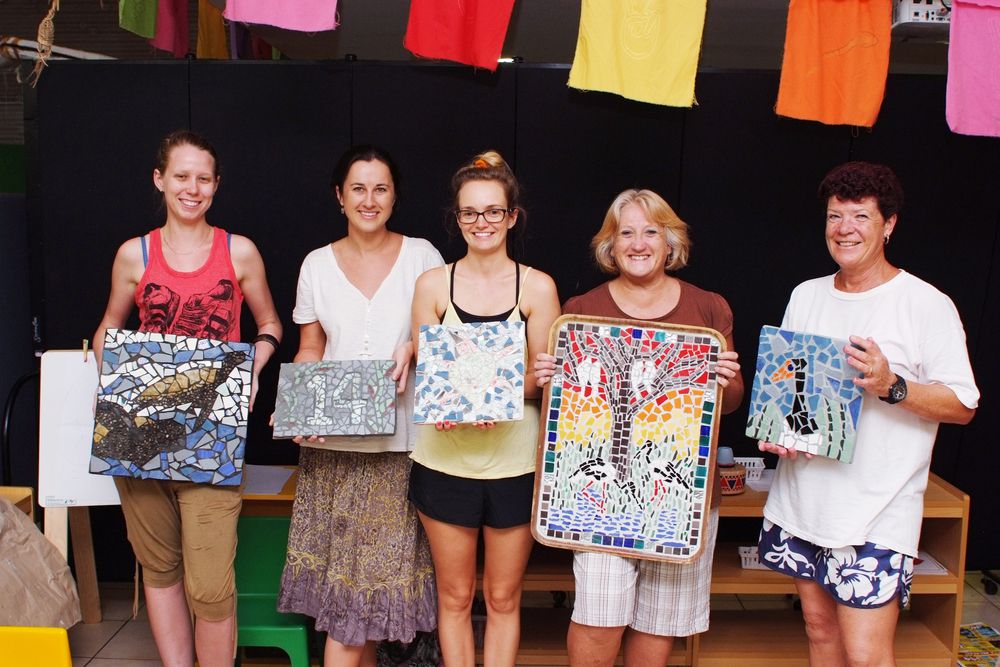Art group has a smashing time
 Jabiru Art and Craft Group members Danielle Hore, Lana Davis, Clancy Allen, Lise Seini and Karen Beare with their mosaic works.
Jabiru Art and Craft Group members Danielle Hore, Lana Davis, Clancy Allen, Lise Seini and Karen Beare with their mosaic works.
EVER wonder what happens to all those plates they smash at Greek weddings?
Well, it would be nice to think they are repurposed into colourful, eye-catching new designs -- much like the ones the Jabiru Art and Craft Group have been creating recently. The group has been meeting every Tuesday night for the past few weeks to work with mosaics under the tutelage of Lise Seini.
“We’ve had about six or seven participants, who have been working now for about three or four weeks,” Lise said. “I am really impressed with their results.”
While one or two of group defected to play mixed netball, which runs on the same night, the rest persevered with their work, following Lise’s methods and helpful advice.
“First of all you need to have a colour scheme in mind,” Lise said. “Once you’ve decided what size you want your work to be, you then draw your design.”
The foundation for a mosaic can be anything that will bond with a tile adhesive and be rigid and strong enough to support the weight of the tiling and grout. You can mosaic almost anything -- a table, planter, or a birdbath. “You can use a piece of plywood, or clay – I did one using an old tray,” Lise said. “Once you are happy with your design, you place the pieces in position on your design using tile adhesive.”
The pieces used in a mosaic, called tesserae, can be tiles, porcelain, glass, mirrors, beads, or even seashells. The pieces can be cut to size using a glass or tile cutter, or by the hit-and-miss approach, a la Greek folk culture. You can work from one corner of the design to the other in rows, of simply put the adhesive straight onto the tile, like buttering toast.
“This is the stage when you might lift and replace some of the pieces,” Lise said. Once the layout is finished, it is left to dry, which could take a day or three. “Once it is dry, do the grouting. You let it dry and then brush it off,” Lise said.
You can also add colours to the grout to accentuate the mosaic. “With Danielle’s mosaic of the turtle, the original grout was white. “But we didn’t like the end result, so we went over it again with a dark grey grout and now it looks much better.”
Lise said she learned how to do mosaics in South Africa, when a friend asked her to join in learning a new craft. “I did it and I love it, so now I’m sharing my skills with this group,” she said. Selected mosaic artworks from the Jabiru Art and Craft Group will be on display at the West Arnhem Regional Council Chambers in Jabiru until the end of June.

